This is a shopping guide for anyone who is new to Japanese cooking. With these basic pantry staples, you can pretty much cook up an amazing variety of Japanese dishes at home!
Excited to try your hand at Japanese cooking? It’s really easier than you think! First, you’ll need to learn about the basic ingredients and do some shopping. We’ve put together a simplified shopping list below, which includes resource links with substitutions, the best places to shop, my recommended brands, etc. Some of these staples are ingredients that you probably have on hand or are familiar with.
I’ve categorized them based on:
- Condiments
- Rice & noodles
- Dry goods
- Fresh ingredients
Once you have them stocked up, you will be ready to cook the majority of AUTHENTIC Japanese recipes that I share on Just One Cookbook!
Condiments
1. Soy Sauce
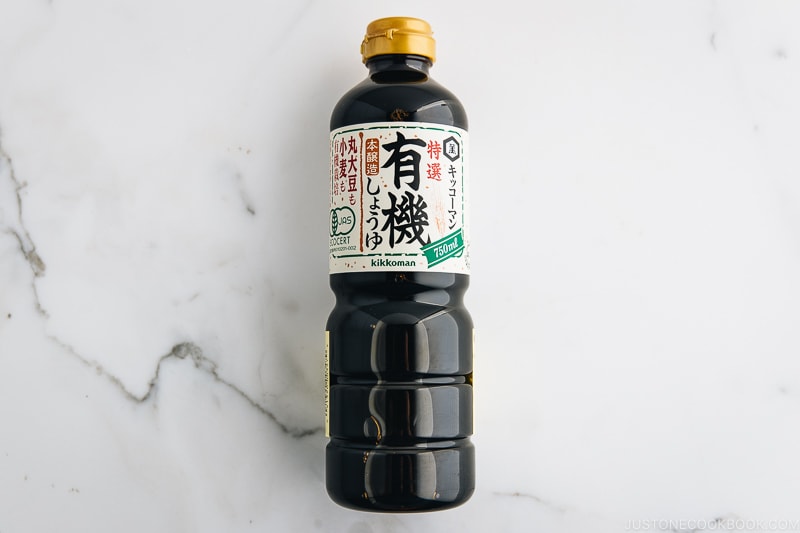
You likely already have a bottle of soy sauce stocked in the kitchen. As the most basic pantry essential in Japanese and many other Asian cooking, soy sauce or shoyu (醤油) doesn’t need much introduction.
But do you know not all soy sauces are created equally? To cook Japanese food, it’s important to use only Japanese soy sauce. That’s not because Japanese soy sauce is superior to the Chinese, Korean, or Thai counterparts, but because they are all different in their own way.
For one, Japanese soy sauce is more delicate in taste and has a complex savory flavor. You’d taste the difference instantly if you used other soy sauce in a Japanese dish.
To learn more about how it’s made, its uses, nutrition, and substitution, read our details on our Soy Sauce pantry page.
My recommended soy sauce brand: Kikkoman Organic Soy Sauce.
2. Sake (Japanese Rice Wine)
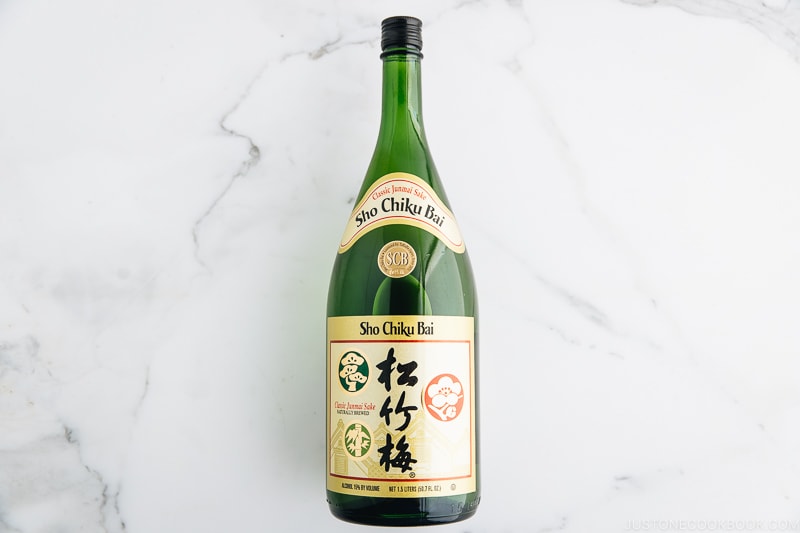
Japanese use sake (酒) in a variety of dishes as the rice wine can do wonder in enhancing the overall flavor of a dish. We use it frequently in meat and fish marinades, and very often, in sauces, soup, and simmered dishes.
For those of you who really cannot find sake, a good quality pale, dry sherry can be used as a substitute. You can opt for Chinese rice wine or Shaoxing wine, but you may want to use a lesser amount as the flavor is much more assertive than sake.
For a more complete description of sake, check out our Sake pantry page.
My recommended sake brand: Sho Chiku Bai Classic Junmai Sake.
3. Mirin (Japanese Sweet Rice Wine)
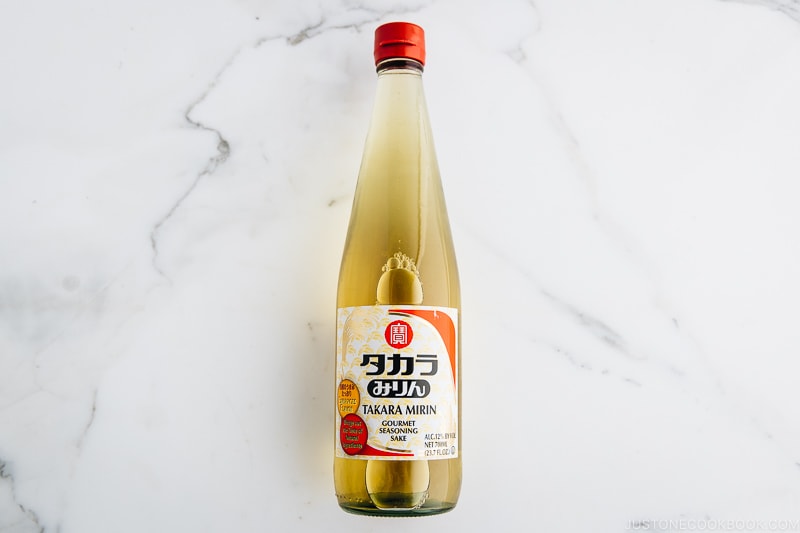
Mirin (みりん) is a sweet syrupy liquid used mainly as a seasoning and glazing agent in Japanese cooking. It is a type of rice wine just like sake, but with lower alcohol content. We use mirin to add luster, help tenderize meat/seafood, and add a distinct sweetness to dishes.
You can substitute mirin with sake and sugar, although it won’t be exactly the same.
To learn more about the various types of mirin, storage, substitutions, and more, read up on our Mirin pantry page.
My recommended mirin brands: Takara Mirin or Fuki Hon Mirin.
What exactly is the difference between Sake and Mirin? Learn more here.
4. Rice Vinegar
Rice vinegar (米酢) is milder, sweeter, and less stringent than western vinegar. It can help to lift up a dish by lending a mildly tangy, sourish yet fruity sweetness to the dish. Just like western vinegar, we use rice vinegar in Japanese-style salads, pickles, and various sauces. It is also the most important seasoning to make Sushi Rice.
For a detailed description of rice vinegar, read our Rice Vinegar pantry page.
My recommended rice vinegar brand: Mizkan Natural Rice Vinegar.
5. Miso
In Japanese cuisine, miso (味噌) goes way beyond soup. This versatile condiment can be used in marinades, dressings, sauces, or even in baking! There are many different types of miso out there and each miso varies in taste, aroma, texture, and saltiness. For beginners, start with yellow miso (also known as Awase miso).
Before you shop, read on our detailed Miso pantry page!
My recommended miso brand: Hikari Miso Organic Kodawattemasu.
6. Dashi (Japanese Soup Stock) – Homemade or Convenient Packet
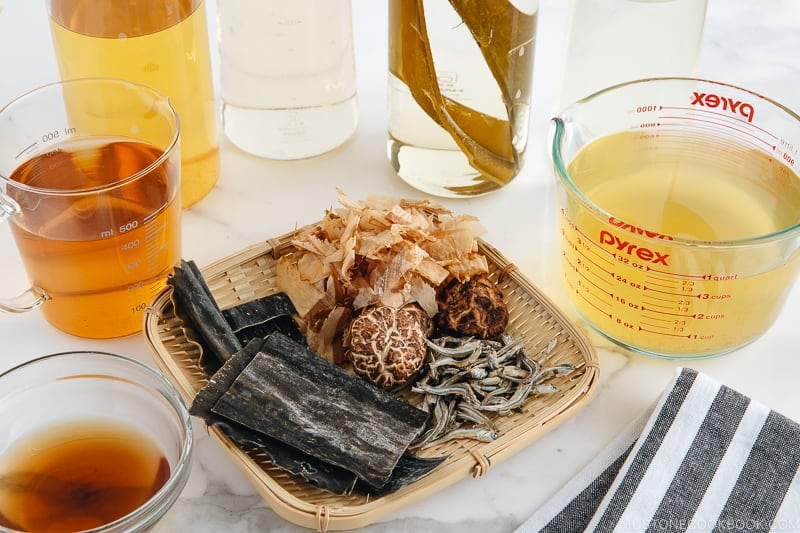
When people ask me ‘what defines authentic Japanese flavor’? My answer is Dashi (だし, 出汁). Think of it like chicken broth, but dashi has a far more important and comprehensive role in our kitchen. It is literally the soul of Japanese cuisine.
You’ll need dashi to make Miso Soup, Chawanmushi, Sukiyaki, Tempura dipping sauce, Curry Udon, Oyakodon rice bowl, and the list goes on. It is what gives Japanese dishes the distinctive umami flavor.
To make dashi from scratch, you’ll need either Kombu or/and Katsuobushi (or Dried Shiitake Mushrooms) on the shopping list. If you prefer the easier route, then you can choose to use either Dashi Packet or Dashi Powder.
But first, I recommend reading up this Ultimate Guide on How to Make Dashi.
My recommended dashi packet brand: Kayanoya Dashi Packet or Yamaki Dashi Packet (both MSG-free)
7. Mentsuyu (Noodle Soup Base)
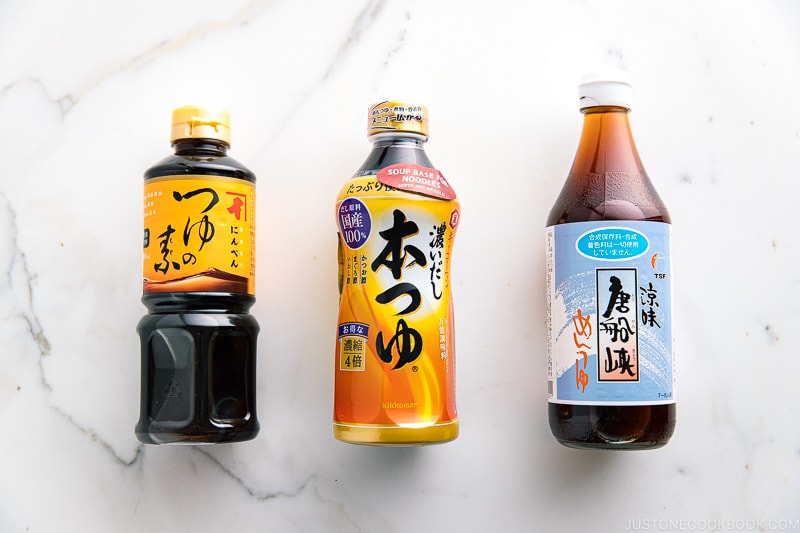
We use Mentsuyu (めんつゆ) or Tsuyu as a basic sauce or broth for many Japanese dishes such as cold noodles, hot noodle soups, donburi rice bowls, and Yaki Udon.
You can find Mentsuyu at Japanese or Asian grocery stores. If your local Asian grocery stores don’t carry Mentsuyu, you can make Homemade Mentsuyu from scratch with basic Japanese condiments listed here.
For a detailed description of Mentsuyu, read our Mentsuyu pantry page.
My recommended Mentsuyu brand: Kikkoman Hon Tsuyu.
8. Sesame Oil (Roasted/Toasted)

Sesame oil (胡麻油) adds an unmissable nutty aroma to dishes in Japanese food. It comes in non-roasted and roasted varieties. When we call for it in recipes, we only use the roasted one. It is often used as a finishing oil or as a flavoring, mainly in salad dressing or in sauteed dishes.
These days you will be able to find roasted sesame oil at regular grocery stores. Otherwise, you can purchase it on Amazon here. Look for Pure or 100% sesame oil (roasted).
My recommended sesame oil brands: Maruhon Sesame Oil or Kadoya Sesame Oil.
9. Tonkatsu Sauce
If you enjoy Japanese deep-fried dishes such as Tonkatsu (Pork Cutlet), Ebi Fry (Fried Shrimp), and Korroke (Croquettes), then you’ll need Tonkatsu sauce (とんかつソース) in your pantry.
My recommended Tonkatsu Sauce brand: Bull-Dog Tonkatsu Sauce, but you can also easily make the Tonkatsu Sauce from scratch with simple ingredients at home.
Rice & Noodles
10. Japanese Short-Grain Rice
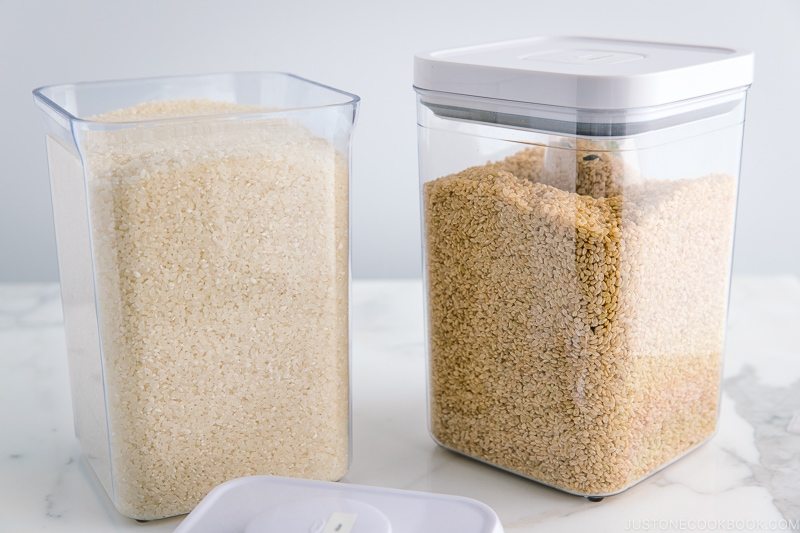
There are many different varieties of rice out there, but for Japanese cooking, you’ll need Japanese short-grain rice (米). It is sometimes labeled as ‘sushi rice’, as in you’ll need the rice to make vinegared rice for sushi. But we basically use this variety of rice for everything. The rice grains are short and plump and cling together without being mushy when properly cooked.
To learn more, please read Everything You Need to Know about Japanese Rice.
My recommended Japanese short-grain rice brands: Shirakiku Koshihikari Rice, Tamanishiki Super Premium Short Grain Rice, and Tamaki Gold.
11. Soba Noodles (Buckwheat Noodles)
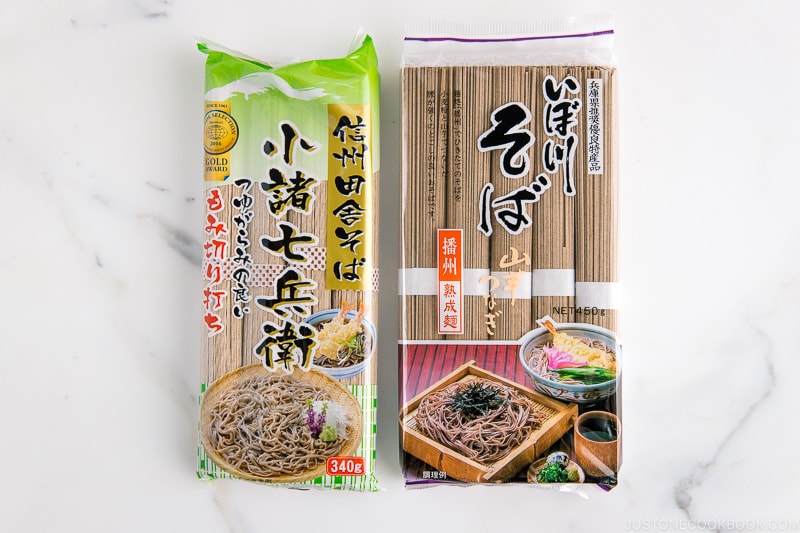
Made from buckwheat flour, or a combination of buckwheat and wheat flour, soba noodles (そば) are another key staple in Japanese cuisine. We enjoy it chilled with a dipping sauce, in a hot broth as a noodle soup, or at room temperature all year round. Soba noodles are commonly sold in dried form, but you can also find fresh or frozen ones in the refrigerated/freezer section at Japanese grocery stores.
In the US, you can find some of the common brands like Hakubaku Organic Soba or Eden Foods Soba (100% buckwheat; gluten-free) available online or at your local grocery stores.
For a more complete description of soba noodles, please read on our Soba pantry page.
12. Udon Noodles
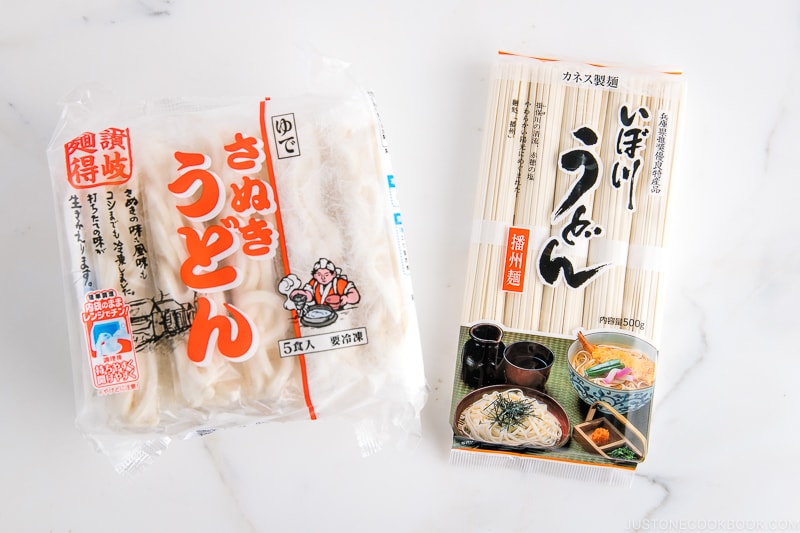
The Japanese enjoy the thick, slippery, smooth udon noodles (うどん) in so many ways. You can serve it in a hot noodle soup, cold with dipping, in a curry sauce, or even stir-fried.
My recommended brand of udon noodles is the frozen package called “Sanuki Udon”. You can purchase it in the freezer section of Japanese supermarkets as well as in some Asian supermarkets. Otherwise, the next option is the dried udon noodles available at major grocery stores or online.
Read up more on Udon Noodles pantry page.
13. Ramen Noodles / Chuka (Chinese-style) Noodles
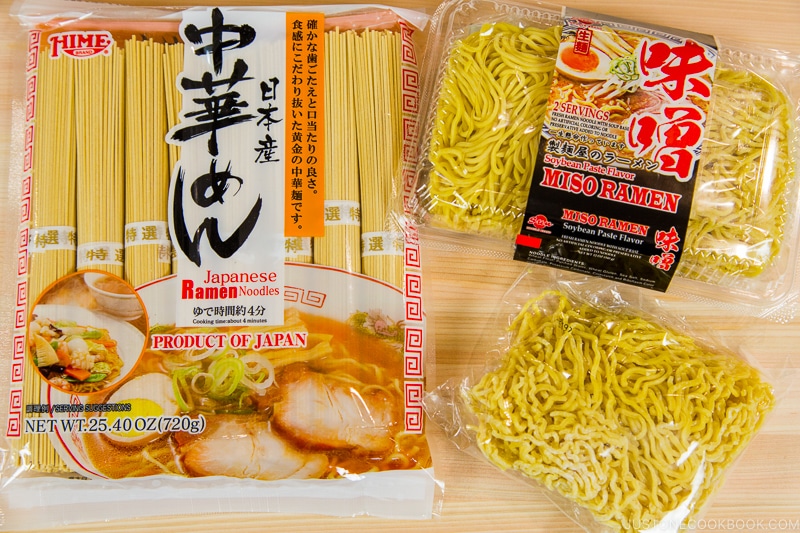
For ramen noodles (ラーメン) and other Chuka (Chinese-style Japanese) noodle (中華麺) dishes, the best fresh noodles you can find in the US are by Sun Noodles. For the dried version, HIME Dried Ramen is the brand that I enjoy. The noodles are straight and sold packaged in bundles. You can find HIME Japanese Ramen Noodles on Amazon too.
To cook Yakisoba or Japanese stir-fried noodles, you will need this prepackaged pre-steamed yakisoba noodle that is available in the refrigerated or freezer section of Japanese/ Asian grocery stores. Some well-stocked American grocery stores may also carry yakisoba noodles, so check in the refrigerated aisle.
Dried Goods
14. Panko (Japanese Bread Crumbs)
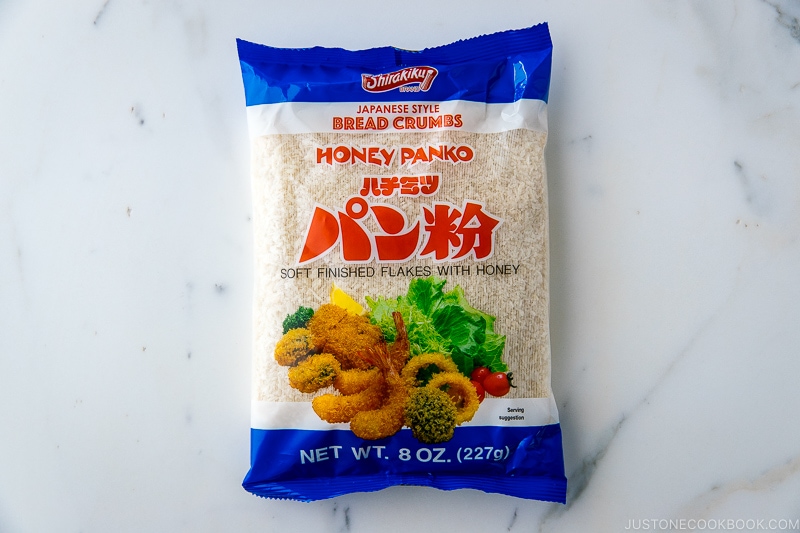
Panko (パン粉) is used as a breaded coating for fried foods, or as a binder in a meat patty, or as a crunchy topping to add texture to baked casseroles. The light, airy, larger flakes tend to stay crispier longer than standard breadcrumbs because they don’t absorb as much grease. You can definitely use it in place of the standard breadcrumbs.
Find it in major grocery stores or Amazon.
15. Potato Starch/ Corn Starch
Potato starch (or Katakuriko 片栗粉) is used to thicken sauces, as a coating for fried food or to prevent food from sticking (in the case of mochi). In Japan, we also use potato starch to make a slurry for Chinese-influenced dishes.
It is known to yield a thicker texture than cornstarch can make, but you can use cornstarch in place of potato starch in my recipes.
16. Toasted White Sesame Seeds

The Japanese use sesame seeds liberally in their cooking. White sesame seeds (白胡麻) are most commonly used to make dressing and sauces, but we also use them for accent or garnish, or even in baking like these Miso Butter Cookies.
You can find toasted white sesame seeds in the Asian aisle of major grocery stores.
17. Shichimi Togarashi (Japanese Seven Spice)
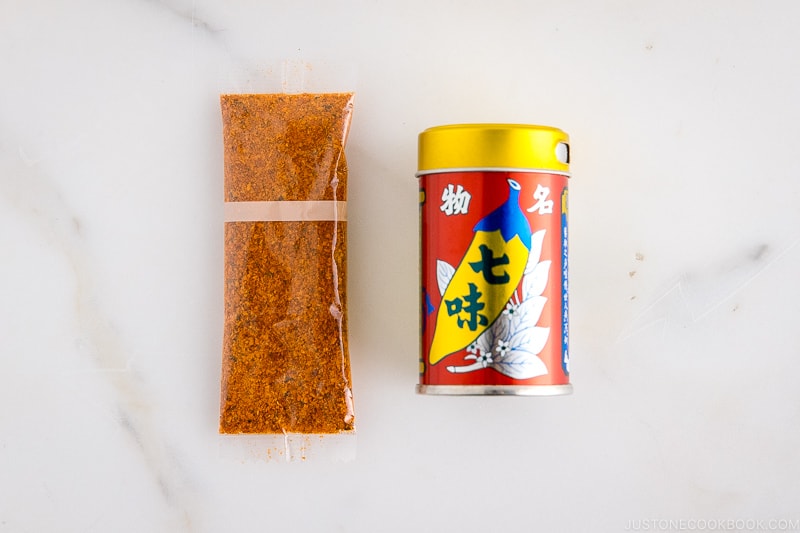
This spicy, bright, and citrusy spice mix called Shichimi Togarashi (七味唐辛子) is a blend of ground and whole spices and aromatics (chili flakes, Sichuan pepper, sesame seeds, nori, shiso, ginger, dried orange peel, etc). Instead of a hot sauce or sriracha sauce, we sprinkle a few dashes of shichimi togarashi whenever we need a little spicy kick to enliven things up.
You can find S & B Shichimi Togarashi at Japanese and Asian grocery stores, or on Amazon. My favorite is Yawataya Isogoro Shichimi Togarashi.
18. Curry Roux (Homemade or Storebought)
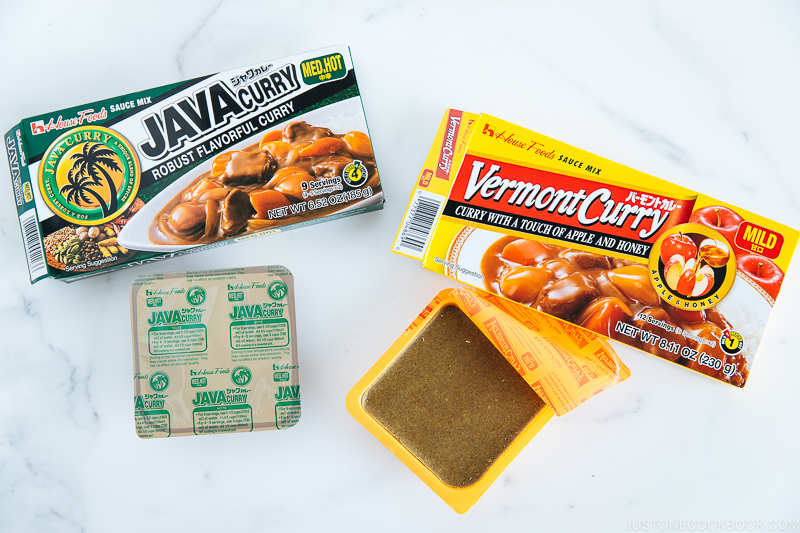
Some of the most favored Japanese home-cooked meals are Japanese curry and dishes such as Curry Udon, Beef Curry, and Katsu Curry. It’s no wonder why you can find prepackaged curry roux (カレールウ) sold everywhere in Japan. They come in a convenient box that resembles a thick chocolate bar. Whenever you need to make curry at home, you just break off individual cubes for the portion you need.
Some of the common brands include S&B’s Golden Curry, House’s Vermont Curry, and Kokumaro Curry.
You can also make Homemade Curry Roux with my recipe (only 5 ingredients) and store it in your freezer.
19. Nori Seaweed and Wakame Seaweed
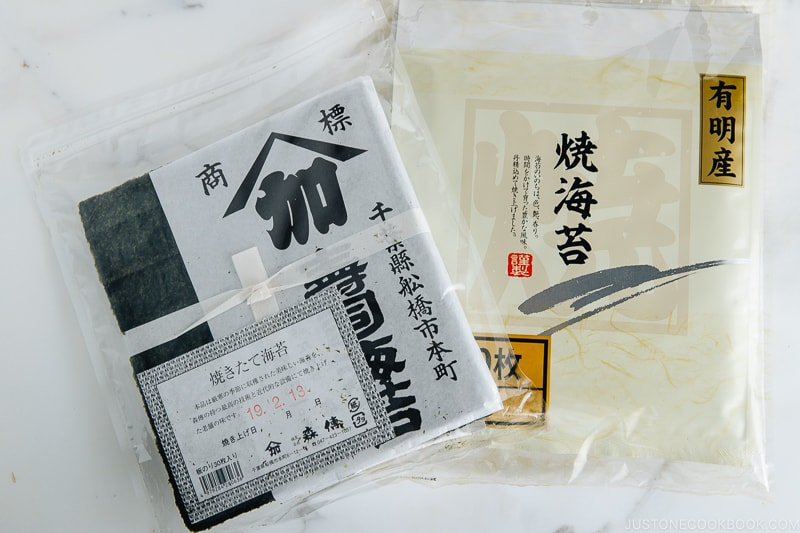
In Japanese food culture, seaweeds are enjoyed for both their nutritional properties and culinary values. We enjoy it in sushi, salads, simmered dishes, and hot pots, and even use it as a key flavoring in making Dashi (Japanese Soup Stock). If you’re new to seaweed, I recommend starting it with Wakame (わかめ) and Nori (海苔, のり). I’ve shared quite a few dishes featuring both wakame and nori, so you can easily use them up to make delicious salads, miso soup, and sushi.
If you’re curious, learn all about the many uses and health properties of seaweeds in this article on the blog.
Good quality nori can be challenging to find outside of Japan. If you can afford it, go with nori brand, which is on the more expensive side. They have a crispier texture and fragrant aroma compared to the inferior ones. As a guide, look for nori from the Ariake Sea (有明海), which is well-known for quality nori.
Fresh Ingredients to Stock At All Times
20. Ginger (and Garlic)
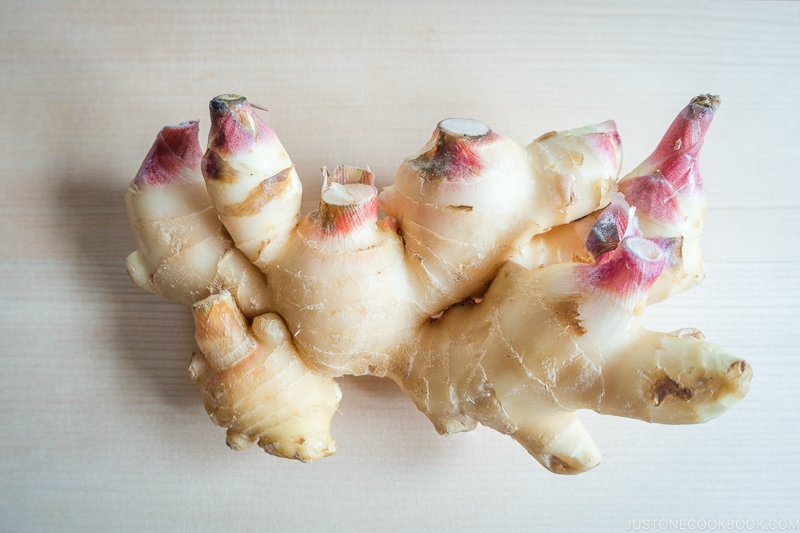
There are many benefits to cooking with ginger (生姜). With a strong cleansing and refreshing quality, we often add grated ginger to pork and seafood dishes. We also use ginger to infuse dishes with its fragrant aroma.
Another excellent aromatic to keep in your pantry is garlic (にんにく), but it’s worth noting that we often use it in Chinese-influenced dishes or Western-style cooking.
21. Scallion/Green Onion and Negi (Long Green Onion)
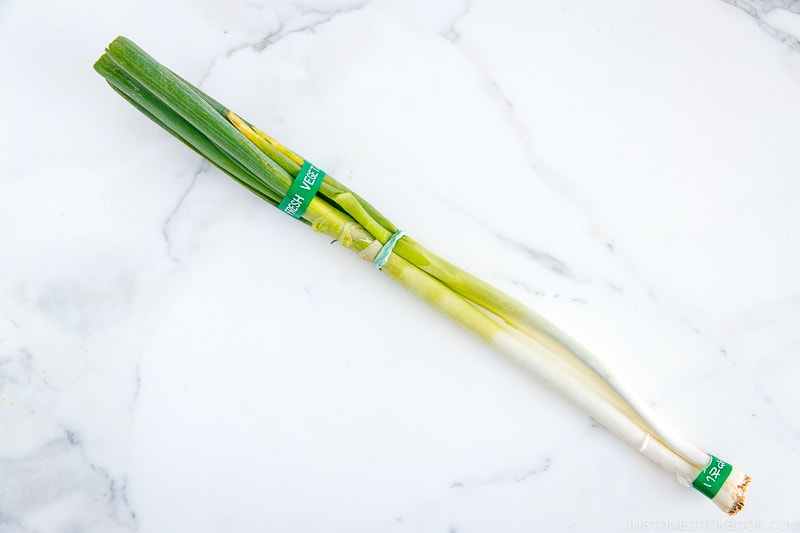
These scallions and long green onions like Negi (ネギ) are wonderful in infusing flavors or used as garnishes to brighten a dish.
22. Tofu and Aburaage (Fried Tofu Pouch)
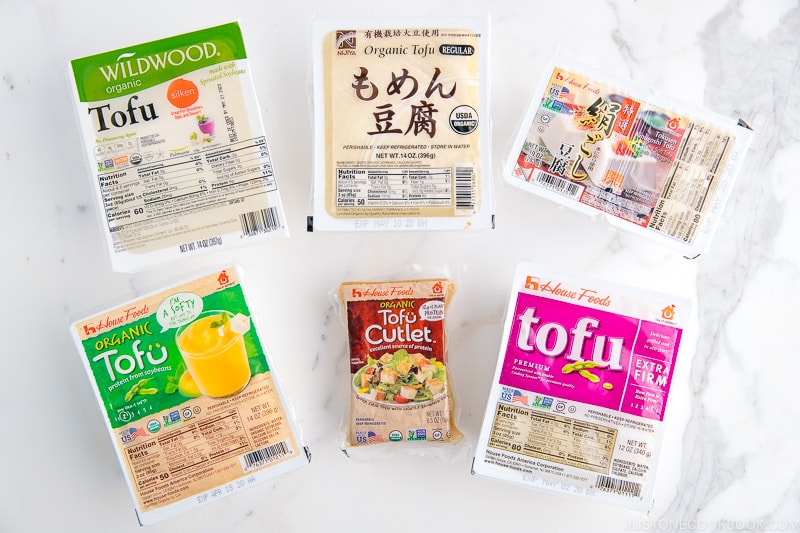
You can never go wrong by keeping a few blocks of tofu (豆腐) in your pantry. From Agedashi Tofu, Teriyaki Tofu, and Tofu Salad to Tofu Pizza, there is a whole world of tofu dishes to explore and cook up at home!
Tofu is widely available in the refrigerated or vegetarian section of major grocery stores. Add a few blocks to your shopping list.
Aburaage is another tofu product that has been deep-fried until golden brown and chewy. It is also called the deep-fried tofu pouches or tofu skin, and you can use it to make Inari Sushi, or add it to Miso Soup and Hot Pot. In the US, you can easily find aburaage in the refrigerated or freezer section of a Japanese grocery store.
23. Basic Vegetables (Broccoli, Spinach, Green Beans, Lettuce, Tomatoes)
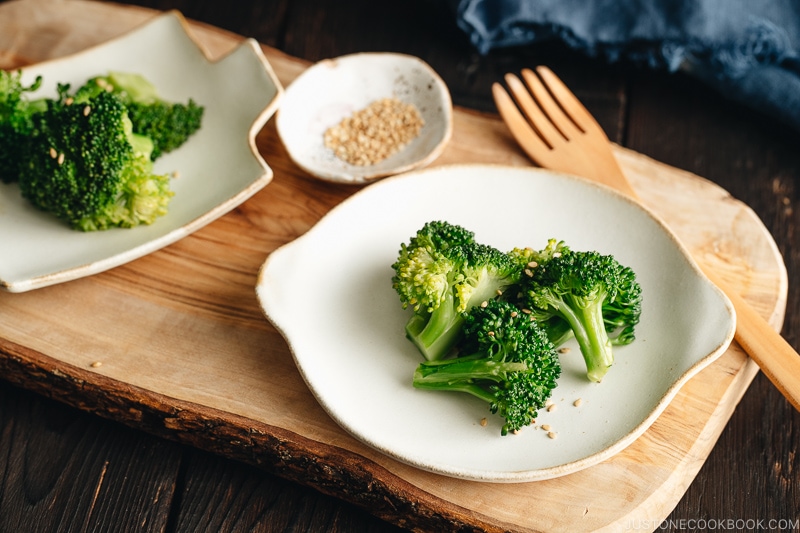
The vegetables on our plates are not any different from many world cuisine. If you can get your hands on broccoli, spinach, green beans, lettuce, and tomatoes, that means you can make quite a number of Japanese dishes at home.
24. Root Vegetables & Squashes
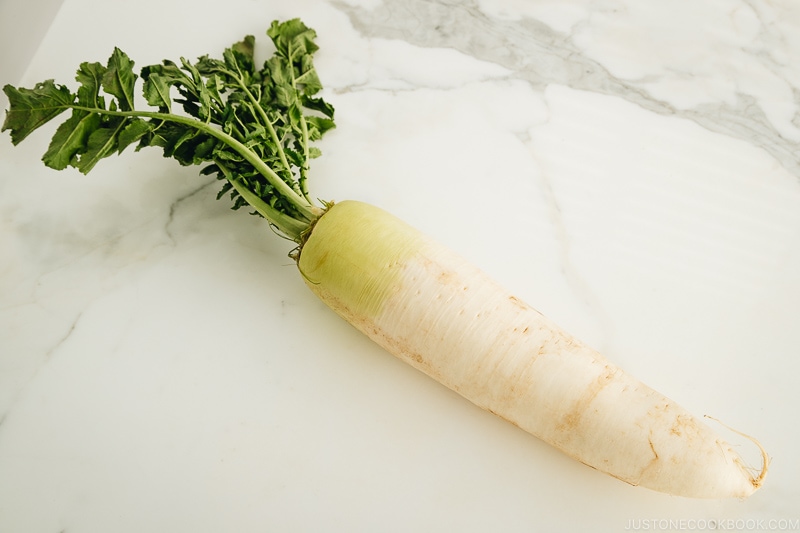
Roots are some of the most versatile, delicious, long-lasting, and nutrient-dense vegetables in the world. Some of the most commonly used root vegetables in Japanese cooking are onions, carrots, and potatoes! You’ll find them in our everyday dishes.
The other unique root vegetables that we often enjoy include daikon, renkon (lotus root), Gobo (burdock root), and Japanese sweet potatoes. The first two are also enjoyed by other East Asian and Southeast Asian cuisines, so you’re most likely to find them at Asian grocery stores or even farmers’ markets. Some well-stocked American grocery stores such as Whole Foods and local co-ops may even carry them.
Many Japanese dishes also feature seasonal fruits such as winter squashes. Japanese kabocha squash is the variety that we often use, but feel free to swap it with other squashes such as pumpkin or butternut squash.
25. Mushrooms
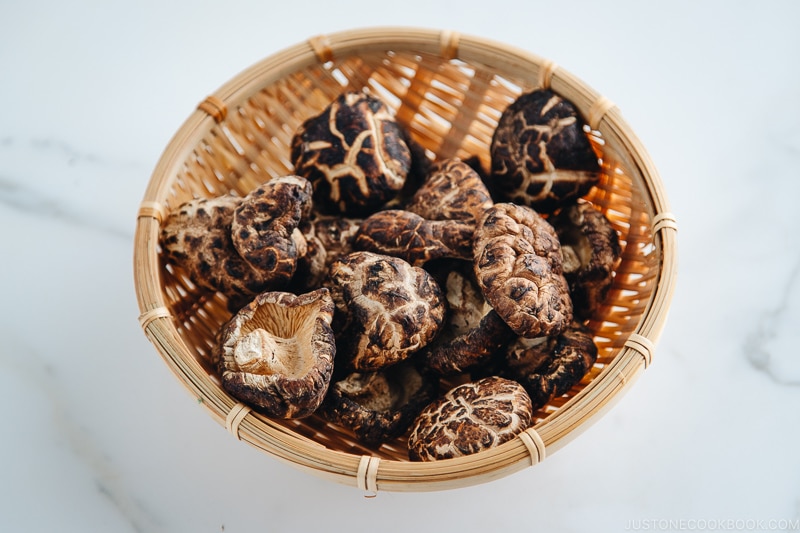
Mushrooms are known for their deep, complex flavors and rich textures. The Japanese have learned the best ways to incorporate these mega fungi into our diet and to savor them in the most fabulous ways. Some of the common ones include shiitake mushrooms, shimeji mushrooms, enoki mushrooms, and king oyster mushrooms.
Personally, I often stock up on both fresh and dried shiitake mushrooms. I use the fresh ones in almost everything, but the dried variety is great in making Japanese soups and simmered dishes.
26. Eggs, Meat, and Seafood

Finally but most importantly, on your weekly shopping list, you’ll need eggs, meat, and seafood. In fact, once I decide on 3-4 main dishes in the weekly meal planning, I’d put these down on my list.
For more cooking fundamentals, check out the resources below:
I hope you find this shopping guide useful. To help with your meal plan, you can use our menu bar or recipe filter and search by INGREDIENTS. There will be a selection of chicken, beef, eggs, seafood, and so on for you to decide.
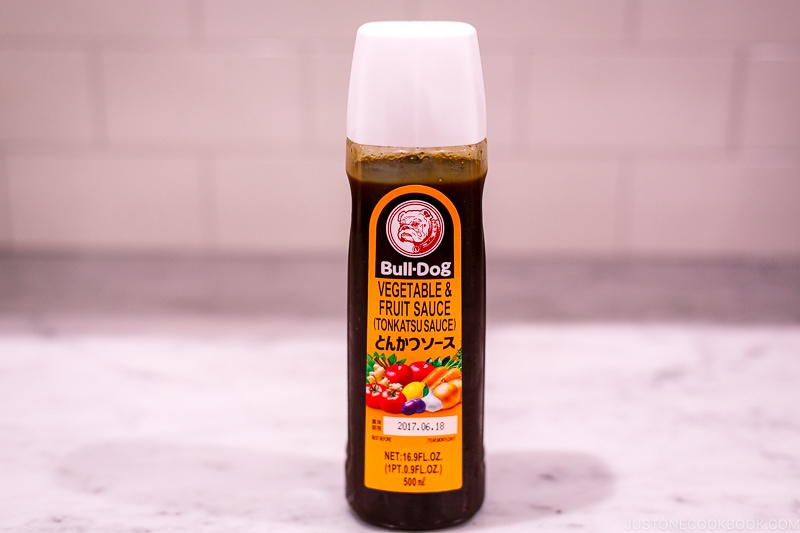

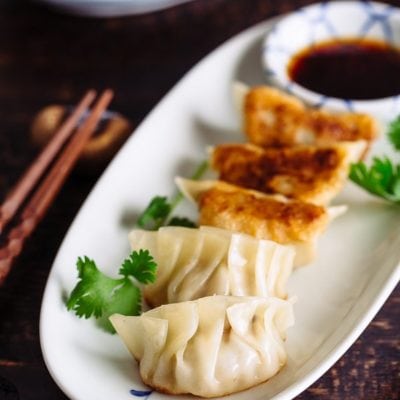
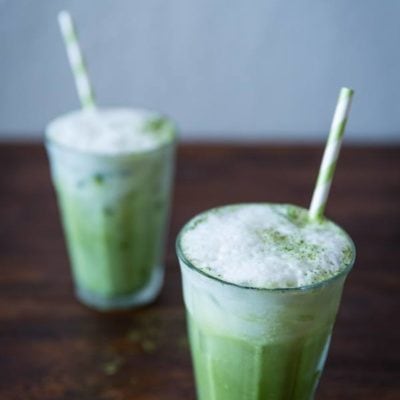


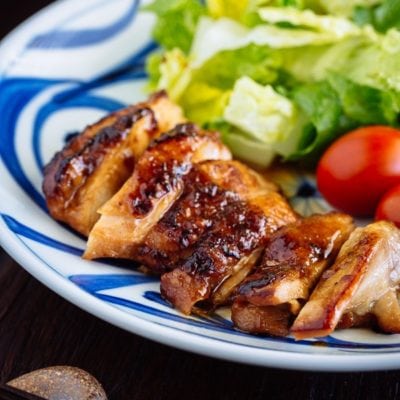
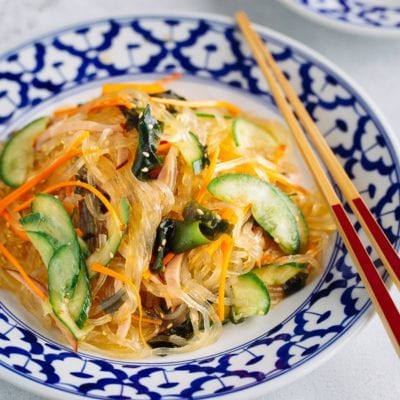
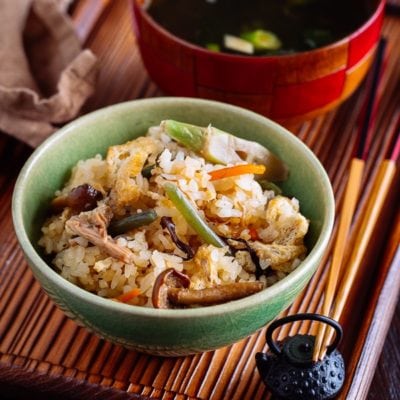
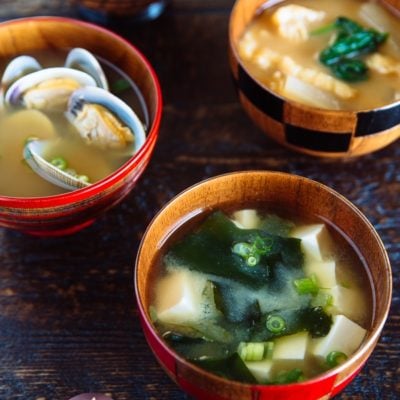
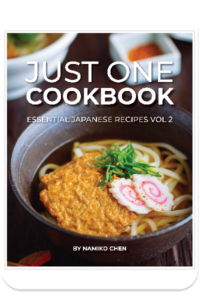
Lots of good information. I look forward to trying as many different recipes as I can. Thank you
Hi, Jose! Thank you very much for your kind feedback!
We hope you enjoy many of Nami’s recipes. If you have any questions about the dish, please leave a comment on the recipe page. We will be happy to assist you! Happy cooking!
What a great read! Thank you! This was very informative.
Hi Tony! We are so happy to hear you enjoyed Nami’s post!
Thank you so much for reading!
Girl, how is Kewpie not in the list???
Hi, Yoshimi! Thank you for reading Nami’s post.
This is a list of basic pantry items for preparing a simple meal. Yes! If you can add kewpie mayonnaise, that will be wonderful! 🤗
This is so helpful! I’m wondering if you have a post or guide on how to store everything? In the fridge or pantry and how long it lasts? 🙂
Hi Nicole! Thank you very much for reading Nami’s post and for your kind feedback!
Yes! Nami posted on how to store items on each linked post. Please click red letters in this post. It will direct you to the page. The product label also tells you how to store as well.😉 We hope this helps!
This was a very helpful list and love your site!
Hi Maria! Thank you very much for your kind feedback!
Nami and JOC team are so happy to hear you love our site.😊
LOVE your site !!! I am a huge Japanese foodie.
I worked as an international pilot and was able to visit japan many times. Due to COVID pandemic, no more unrestricted Japan flights, no more eating in Japan (for now).
Because of your site, now I cook authentic tasting Japanese food at home. I had no idea how easy Japanese curry (my personal favourite) was to make.
In Australia (my home) I have found all the ingredients in the Asian grocery stores (all the good bits are found here at good prices) or major supermarkets
Hi Jeff! We couldn’t be happier to hear how much joy and excitement Nami’s recipe has brought to you!
Thank you very much for reading Nami’s post and sharing your story. Happy Cooking!
Do you have a printable list? I was looking for one and couldn’t find one. Thank you.
Hi Joy! Sorry, we don’t have a print button (this is a long post to print!) but thank you for the idea.
We’ll add it to our to-do list, and hopefully, we can offer a pdf soon!
Control + P
Hi Rhadames! Yes!! That is one of the options! Thank you for your input!😃
love your site I tried the sushi rice prep and it was perfect. Next I will try the spinach salad, something with green beans and chicken katsu.
Hi rocky503! We are glad to hear you enjoyed the sushi rice!
Thank you very much for trying Nami’s recipes and for your kind feedback!
I just moved to Yokohama, and I’m so excited to use this list to stock my pantry!
Hi J C! Awesome! We hope you enjoy many recipes from our site! Happy Cooking!
Since I’ve been home a lot in the past year, I’ve been learning more Japanese cooking. I read this thinking I would find something I didn’t have. Turned out to be one item; mentsuyu! My late mother-in-law would be proud.
Hi Bill! Nami and the JOC team are glad to hear you’ve been learning Japanese cooking!
Thank you very much for reading Nami’s post!
I don’t know where to buy your main engredients can you suggest where to buy these through online?
Dear Nami and Mr. JOC
What Japanese ketchup do you use in your sauce recipes? We looked all over Uwajimaya here in Portland Oregon and there are no ketchups available.
What brand do you recommend?
We don’t stock ketchup at home, so nothing to fall back on.
We just love your recipes and emails. Our best to you and family. Get well and stay safe!
Diane and Bob
Hi Diane and Bob! It varies in recipes because we buy different ketchup based on availability and I don’t always get the same one. For my recipes, I’ve used Trader Joe’s (less sweet, a lot darker in my step-by-step pictures), organic Heinz (a lot brighter), Japanese Kagome Ketchup, etc.
Please tell me what kind of healthy neutral cooking oil do you recommend?
I live in nyc so I can get pretty much everything.
Thanks
Hi Linda! Nami uses this untoasted sesame oil for non-flavored oil. She uses it for cooking and baking. https://www.maruhonoil.com/sesame-oil-product/untoasted-sesame-oil You can also use canola and vegetable oil.